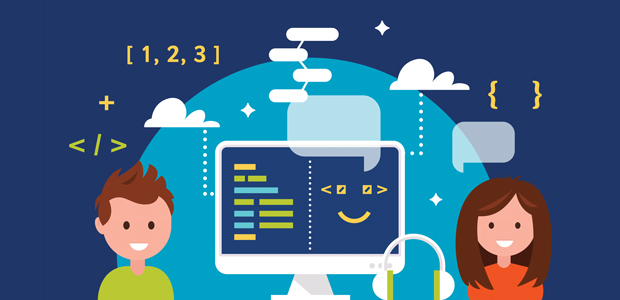
Why Coding Is The Bilinguality Of The Next Generation
Language and communication tools are continuously developing. Human beings have an amazing ability to find new ways of understanding one another and the world around us.
A recent manifestation of this is our ever-deepening relationship with technology. Coding facilitates an overwhelming majority of our interactions, without us even noticing. From the TikTok algorithm which can work out your favourite snack, to beauty websites that know you’ve run out of shampoo, we are surrounded by expert programming. And our conversations are becoming digitised too: according to Eurostat, in 2013 only 22% of enterprises were using social media for marketing, but by 2019, this had increased to 45% . We are constantly updating the way we communicate, and digital infrastructure is the latest arena for these interactions.
Which, in effect, means that coding is the next language we all need to be learning. According to Evans Data Corporation, there will be 28 million coders worldwide by 2025, up from 23 million in 2018. So the numbers are moving in the right direction, but perhaps not at the rate required for a technological society like ours.
Just like your conversational Spanish or beginner’s violin, learning to code is easier at a younger age. Our ability to pick up and learn complex skills diminishes with each year that passes. Which is a clear case for the importance of teaching children to code at school: it is a crucial stepping stone to high-skilled jobs and a direct investment in our digital future.
Not only are there specialised coding schools sprinkled across Europe, such as Academia de Código in Lisbon, Ironhack in Amsterdam and Le Wagon with campuses worldwide, computer programming is becoming integrated into mainstream education. Since 2014, school children in the UK have been starting to code as a result of Google chairman, Eric Schmidt’s initiative to make computer programming a permanent part of the Primary curriculum. Pupils at Key Stage 1 are learning what algorithms are, with programme logic and design lessons being introduced at Key Stage 2. Then into tertiary education, there are inspiring initiatives such as the UK-based Institute of Coding, which is working with 25 universities to integrate computer science into STEM curriculums.
These curricular updates will not only create a new generation of tech savants fit for jobs in coding but they will also hopefully correct some of the demographic imbalances that exist in plain sight within certain industries. According to a global survey carried out in 2020 that studied gender distribution in software engineering, 91.5% of programmers worldwide are still men. A separate report states that 69.1% of coders in the US are white. By including programming in state school systems around the world, there is hope for a more equitable tech workforce within the next generation. Access to coding education is becoming less of a privilege and more of a given, which means we can look forward to a future of programming that is less pale and stale than the current landscape.
In a time when over half of high-paying jobs now require some level of computer programming skills, coding really is the language of the future. Whilst technology is replacing humans in many aspects of daily life, we will always need people to develop and programme these systems. And the markets for tech development are seemingly endless, from the booming HealthTech and FinTech industries, to the growing FemTech and AgriTech sectors. The world's next cohort of creators and innovators will be bilingual, but not in the conventional sense

